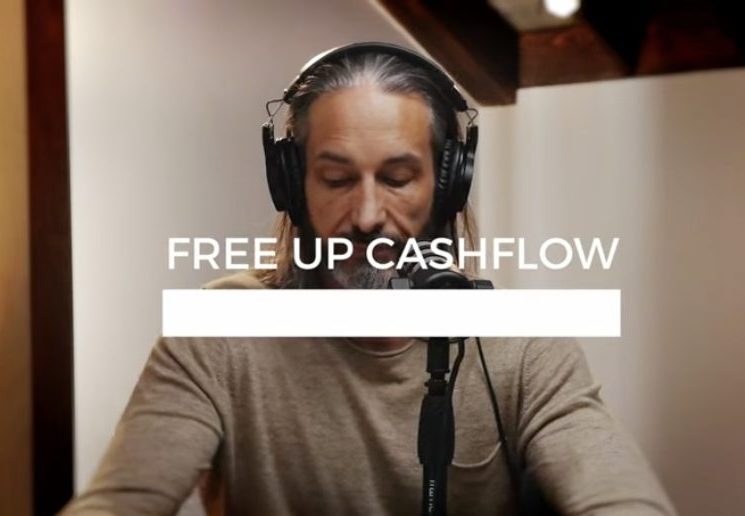When it comes to building wealth, most people are doing it wrong. I’ve spent years coaching elite business owners and becoming a multimillionaire by age 26. I’ve discovered that true financial freedom isn’t about pinching pennies or blindly following conventional wisdom about saving for retirement. I have learned how to master cash flow.
Instead, it’s about being resourceful and focusing on cash flow rather than just accumulation. Let me share some simple but powerful money tricks that can transform your financial situation regardless of your current income level.
Recover Lost Money You Didn’t Know You Had
The first trick is almost too easy to believe. Visit missingmoney.com to find unclaimed funds that might belong to you. These could be uncashed checks, refunds, or other payments that became state property when they couldn’t reach you. I check this site regularly and have found thousands of dollars over the years. During webinars, I often mention this tip and watch as people excitedly discover multiple checks waiting for them.
Plug Your Interest Rate Leaks
One of the biggest ways people lose money is by overpaying interest. To fix this, I use what I call the “Four C’s” approach:
- Credit score – Aim for 760 or higher to qualify for the best rates
- Collateral – Loans backed by assets like homes or cars typically have lower interest rates
- Cash flow reporting – Having organized financial statements makes you a more attractive borrower
- Connections – Finding the right lender for your specific situation can make a huge difference
Once you’ve optimized these factors, you can use my “Three R” methodology to reduce interest costs: Refinance, Renegotiate, or Reallocate.
For example, suppose you’re paying 29% interest on a credit card but have equity in your home. In that case, you might refinance that debt with a HELOC at 8% – potentially saving thousands and making the interest tax-deductible. Or you might call your credit card company and renegotiate your rate based on your improved credit score and payment history.
Attack Debts Strategically with the Cash Flow Index
Most people make the mistake of paying extra toward whatever debt has the highest interest rate. But I’ve found a more effective approach using what I call the “Cash Flow Index.”
List all your debts on a spreadsheet. For each one, divide the total balance by the monthly minimum payment. This gives you the Cash Flow Index number. The debt with the lowest number is your cash flow hog – that’s the one to attack first while paying minimums on everything else.
This approach frees up your cash flow faster, giving you more financial flexibility. As a rule of thumb:
- Cash Flow Index below 50 = Cash hog (prioritize paying this off)
- Cash Flow Index between 50-100 = Danger zone (consider restructuring)
- Cash Flow Index above 100 = Efficient loan (lower priority)
What surprises many people is that sometimes it makes sense to pay off a 0% interest loan if it has a low Cash Flow Index. Even though the rate is attractive, it might be strangling your monthly cash flow.
Rethink Debt: Not All Borrowing Is Bad
We’ve all heard “debt is evil” and “avoid debt like the plague.” While that’s good advice for consumer debt, it’s not the whole story.
I follow a simple rule: Never borrow to consume. Don’t finance depreciating assets or experiences like vacations. Save and pay cash for these.
However, borrowing can be appropriate for productive expenses – investments that generate more money than they cost. The key questions to ask before borrowing are: Will this create unnecessary stress? Do I know what I’m doing? Does it make economic sense?
Prioritize Cash Flow Over Savings
Most people are taught to save money in retirement accounts and wait 30+ years, hoping for the best. This approach leaves too much to chance, including market fluctuations, inflation, and factors beyond your control.
Instead, focus on creating cash-flowing assets. This may involve owning a business, purchasing real estate, or creating intellectual property. The goal is to let your assets cover your income while your income grows your assets.
For young people with limited capital, start by developing your skills. Between the ages of 19 and 24, I focused on learning by donating my time to successful individuals. I asked questions, attended events, found mentors, and figured out my investor DNA. This “hard-easy” model means doing difficult work upfront to enjoy easier rewards later.
Automate Savings, Then Deliberately Invest
Many people skip true savings and jump straight to investing, often in restricted retirement accounts. Instead, set up a sweep account at your bank that automatically moves a percentage of every deposit into separate savings accounts. This helps you avoid Parkinson’s Law — the tendency for expenses to expand to meet increased income.
By automating savings and living off the rest, you naturally stay within your means without having to budget constantly. This applies to business owners too — pay yourself a salary plus distributions, or your business will consume all profits.
Remember, being resourceful doesn’t mean you’re wealthy, but it can lead to wealth. It’s about asking better questions, finding ways to add value, and increasing your own value. Even in my most challenging financial times, I found creative solutions – trading marketing work for gym access, staying with family on trips, and selling unused items to fund my business.
The path to financial freedom isn’t about having all the resources – it’s about being resourceful with what you have right now







